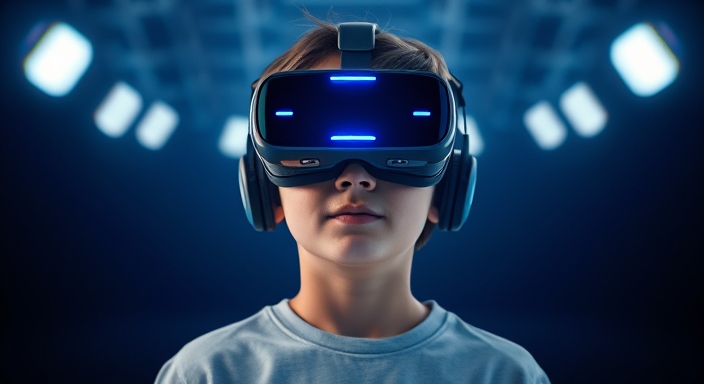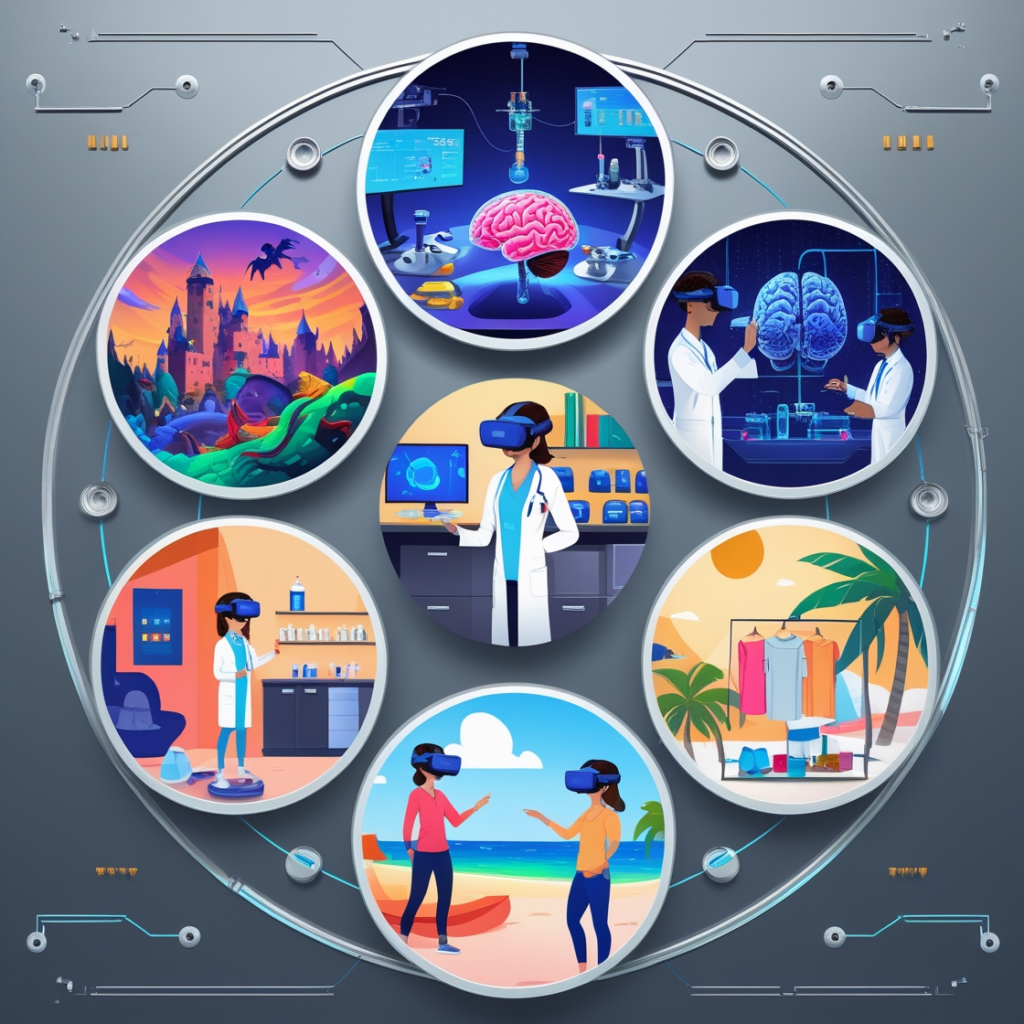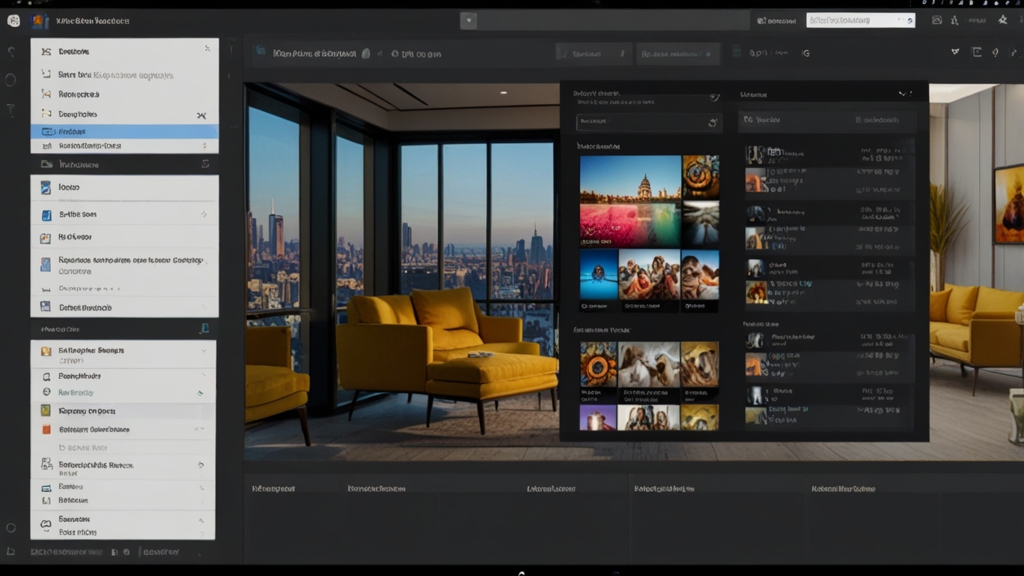Virtual Reality: Unlocking Limitless Possibilities in the Digital World

In the fast-moving, digitized modern world, the pace of technological change is breathtaking as it transforms the way we live, work, and interact. Amongst a host of such technological innovations, Virtual Reality stands out as a powerhouse of change with the potential to redefine reality itself.
From a concept confined to the pages of science fiction, virtual reality has now become an integral part of industries ranging from entertainment to healthcare. This blog explores the captivating world of virtual reality, its applications, benefits, challenges, and the future it promises.
What is Virtual Reality?
The whole concept of virtual reality implies immersion of the computer users into a three-dimensional created environment, where they already can interact with some form of virtual world in real time. With the assistance of particular devices, such as VR headsets or gloves, one can even feel this or that reality being simulated-which may not at all resemble the physical one.
The core components of a VR system include :
- VR Headsets: Oculus Quest, HTC Vive, and PlayStation VR headsets are just a few among many to create this virtual experience with visual and audio components.
- Motion Sensors: These track the movement of users and then mirror it in virtual space.
- Controllers: Enable users to interact with objects in the virtual environment.
- Software Platforms: Create and implement VR experiences with the use of advanced algorithms and 3D modeling.
A Brief History of Virtual Reality
The journey of VR began long before sleek, wireless headsets. Key milestones include:
- 1960s – First VR Device: The Sensorama by Morton Heilig introduced a multi-sensory cinema.
- 1980s – The Rise of VR Research: Virtual Reality was first popularized by Jaron Lanier, founder of VPL Research.
- 1990s – Gaming and Commercialization: Sega VR and Nintendo’s Virtual Boy tried to let the world know about its existence.
- The Modern VR Era: This revolution started with Oculus Rift and is improved further with hardware and software upgrades.
Today, VR is more accessible and versatile than ever, with applications extending far beyond gaming.
Virtual Reality Applications

1. Entertainment and Gaming
VR has redefined entertainment through its capability to offer an experience in a way that no other medium can. Popular applications include:
- Gaming: VR gaming drops you right into your favorite worlds, from fighting off zombies in Resident Evil 4 VR to exploring alien landscapes in No Man’s Sky.
- Movies and Virtual Cinemas: Bigscreen VR, for example, enables users to watch movies in virtual cinemas with friends.
- Live Events: Online virtual concerts and sports events engage unprecedented levels of participation, from virtual Travis Scott concerts to gaming platform Fortnite.
2. Healthcare
The medical field now embraces VR to enhance patient care and medical training:
- Surgical Simulations: The ability to practice complex procedures in a virtual, no-risk environment.
- Therapy: VR is used for treating PTSD, phobias, and anxiety disorders through controlled exposure therapy.
- Rehabilitation: The patients in the recovery stage, after having a stroke or injury, put into practice VR for physical therapy and cognitive training.
3. Education and Training
VR enables a complete revolution in learning, such as through interactive and hands-on experiences:
- Virtual Classrooms: The facility of attending lectures in virtual environments and interacting with peers across the globe.
- Skill Training: The use of VR has started to be implemented in various industries for realistic training simulations, such as aviation, construction, and the military.
- STEM Learning: VR enables the visualization of abstract scientific concepts, such as exploring the human anatomy or even simulating chemical reactions.
4. Real Estate and Architecture
- Virtual Property Tours: Customers can view properties, literally from the comfort of their home.
- Architectural Visualization: Virtual reality is used by architects to present designs to their clients through the ability to virtually walk through spaces before the actual construction.
5. Retail and E-Commerce
- Virtual Shopping: IKEA and the like will let customers download VR apps that can be used to show them how items may look in their homes.
- Customer Engagement: Brands create interactive customer engagement with VR.
6. Travel and Tourism
- Virtual Tours: Take an expedition to places like the Great Wall of China or even something as close as the Louvre Museum without having to leave your house.
- Experiences Before Travel: Virtual reality enables the preview of destinations that travelers would want to make informed decisions about.
Advantages of Virtual Reality
1. Improved User Engagement
VR captivates attention more than any other medium does; it gives immersive and interactive experiences to users.
2. Cost-Effective Solutions
Training simulations and virtual prototypes save costs on physical resources and travels.
3. Improved Accessibility
VR bridges the gap in geography, enabling people from different parts of the world to collaborate in education, business, and even social interactions.
4. Risk-Free Environments
From medical training to industrial simulations, VR offers a safe space for learning and experimentation.
Challenges of Adopting Virtual Reality
1. High Initial Costs
The good VR hardware is not very cheap, neither is software, which limits access by smaller businesses and individuals.
2. Technical Limitations
Issues such as motion sickness, limited field of view, and hardware constraints can hamper the user experience.
3. Creation of Content
Creation of high-quality VR content requires broad resources and know-how.
4. Privacy and Security Concerns
This brings about a number of issues in regard to privacy and data protection when collecting user data through VR applications.
The Future of Virtual Reality
The future is full of possibilities in relation to VR:
- 1. Hardware Improvements: Lighter, cheaper headsets with higher resolutions and even wireless capabilities can be expected.
- 2. Integration with AI: Artificial intelligence will enrich VR experiences by providing more intelligent interactions and adapting the environment.
- 3. Scaling into the Metaverse: VR is a cornerstone-a fundamental component-of the metaverse, a shared virtual place promising to revolutionize such interactions.
- 4. Increased Adoption of VR by More Industries: From agriculture to fashion, different industries will take up VR as a tool for better management and to provide value services to clients. — SEO Optimisation of Virtual Reality That’s also optimization for search engines in business VR.
- Here are a few tips: –
- 1.Use Appropriate Key Words: Add terms related to VR such as “virtual tour,” “VR training, and “immersive technologies.
- 2.Rich Media: Add high-quality images and videos of VR experiences that engage users.
- 3. Mobile Optimization: The site should be mobile-friendly because many users access VR via smartphones.
- 4. Informative Blogs: Regular blogs on the trends and applications in VR for capturing organic traffic.
- Conclusion
- VR is not just another technology, but a paradigm shift in the very way we interact with the digital world. The potential of VR, from enhanced entertainment and education to revolutionized healthcare and commerce, is just endless. How that potential is realized, however, faces many obstacles in the way of cost, accessibility, and content creation. As VR continues to evolve, so also will its impact on our society deepen further and continue to blur the line separating the virtual from the real. Businesses, educators, and innovators must embrace this transformative technology in the ever-increasingly virtual world. The future is virtual, and the possibilities are infinite.









